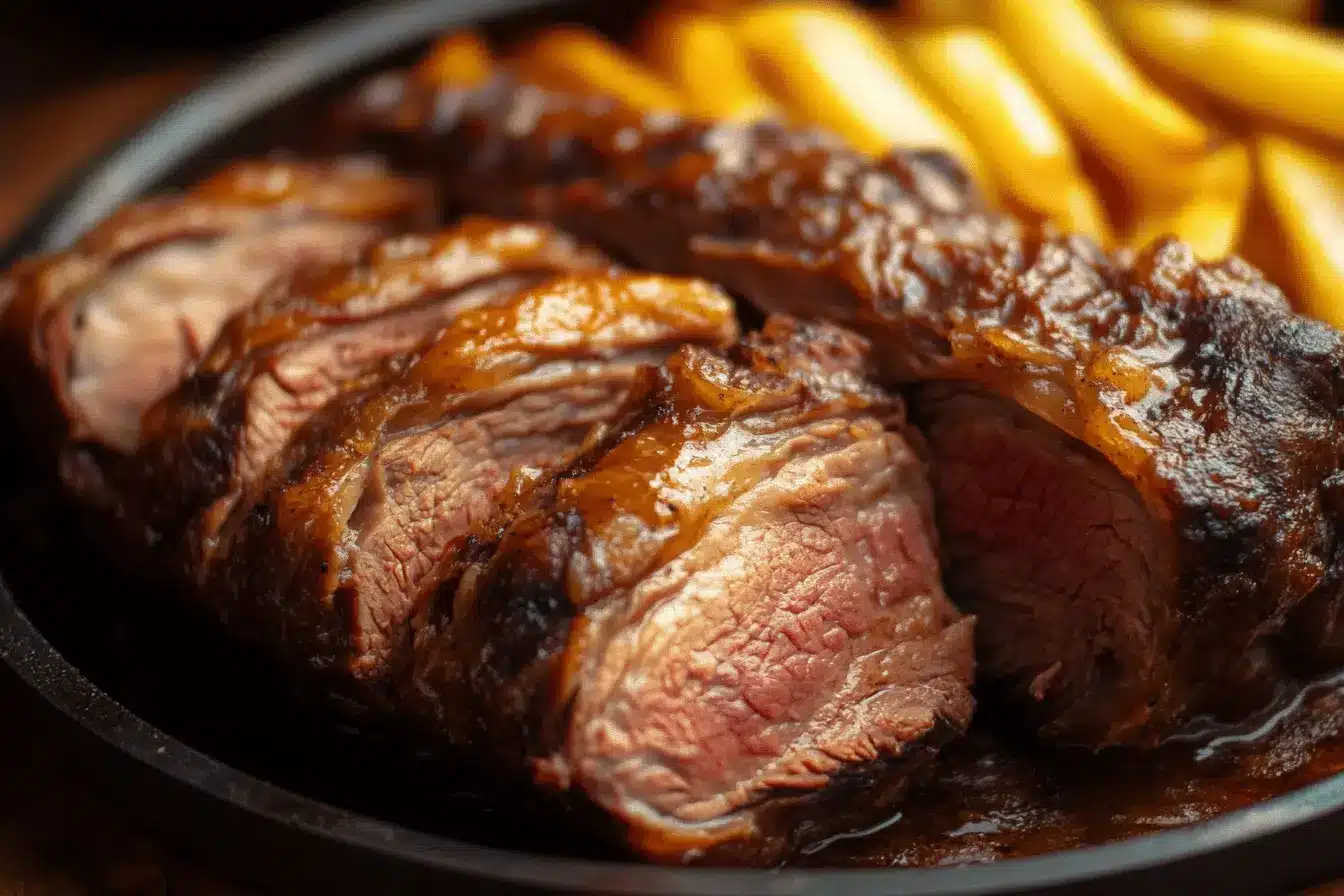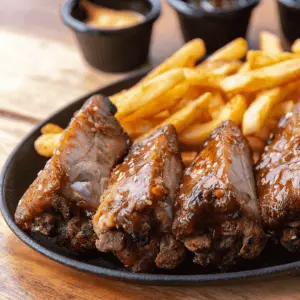Attention all food lovers! Are you ready to embark on a culinary journey that will tantalize your taste buds and impress your dinner guests? Look no further than the classic French roast recipe. This timeless dish is a staple in French cuisine, known for its rich flavors, tender meat, and delightful aroma. Imagine serving a perfectly cooked French roast at your next gathering, accompanied by a luscious gravy and an array of side dishes. The desire to master this recipe is understandable, and with our comprehensive guide, you’ll be able to achieve stunning results in your own kitchen. So, let’s dive into the world of French roast and discover the secrets to creating this mouthwatering masterpiece.

French roast, also known as rôti de boeuf, is a beloved dish in French cuisine. It involves slow-roasting a cut of beef until it reaches a state of tender perfection. The key to a successful French roast lies in the roasting techniques employed, which allow the meat to develop a delightful crust on the outside while remaining juicy and flavorful on the inside. In this article, we will explore the ingredients, equipment, and techniques needed to create an authentic French roast. We’ll also delve into the art of preparing the meat, making a delectable sauce, and serving the roast with complementary side dishes. By the end of this guide, you’ll have all the knowledge and confidence to create a French roast that will impress even the most discerning palates.
Ingredients and Equipment Needed
To create a sublime French roast, you’ll need the following ingredients:
– A high-quality cut of beef (such as top round, sirloin tip, or eye of round)
– Herbs (thyme, rosemary, parsley)
– Spices (salt, black pepper, garlic powder)
– Olive oil or butter
In addition to the ingredients, ensure you have the necessary kitchen equipment:
– A large, heavy-duty roasting pan with a rack
– A meat thermometer
– A sharp knife for trimming and slicing the meat
When selecting your ingredients, opt for the highest quality possible. Choose a cut of beef with good marbling, as this will contribute to the flavor and tenderness of the roast. Fresh herbs and quality spices will also elevate the taste of your French roast.
Preparing the Roast
Before you begin cooking, it’s crucial to properly prepare the meat. Follow these steps for optimal results:
- Trim any excess fat or silver skin from the beef using a sharp knife.
- Marinate the beef by rubbing it with a mixture of olive oil, salt, pepper, and your chosen herbs and spices. This will infuse the meat with flavor and help create a delicious crust during cooking.
- Allow the marinated beef to sit at room temperature for about an hour before roasting. This ensures even cooking throughout.
- Preheat your oven to the appropriate temperature (usually around 325°F or 160°C) and set up your roasting pan with a rack.
Seasoning plays a vital role in the flavor profile of your French roast. Experiment with different combinations of herbs and spices to find your preferred taste. Classic options include thyme, rosemary, garlic, and black pepper.
French Roast Recipe Cooking Techniques
There are various methods for cooking a French roast, but oven roasting is the most traditional and reliable technique. Here’s a detailed guide to the cooking process:
- Place the prepared beef on the rack in your roasting pan.
- Insert a meat thermometer into the thickest part of the roast, ensuring it doesn’t touch any bone or fat.
- Roast the beef in the preheated oven, allowing approximately 20-25 minutes per pound for medium-rare doneness.
- Baste the roast occasionally with its own juices or additional marinade to maintain moisture and enhance flavor.
- Check the internal temperature of the roast using the meat thermometer. For medium-rare, aim for an internal temperature of 135°F (57°C).
- Once the desired doneness is achieved, remove the roast from the oven and let it rest for 10-15 minutes before slicing. This allows the juices to redistribute, resulting in a more tender and flavorful meat.
Slow cooking is another popular method for French roast, which involves cooking the meat at a lower temperature for an extended period. This approach yields an incredibly tender and succulent result.
Making the Sauce/Gravy
No French roast is complete without a delectable sauce or gravy. Here’s how to create a classic accompaniment:
- Remove the roast from the pan and set it aside to rest.
- Place the roasting pan on the stovetop over medium heat.
- Add a mixture of beef broth and red wine to the pan, scraping up any browned bits from the bottom.
- Whisk in a tablespoon of flour to thicken the sauce, stirring continuously to avoid lumps.
- Allow the sauce to simmer for a few minutes until it reaches your desired consistency.
- Strain the sauce through a fine-mesh sieve to remove any solids, and season with salt and pepper to taste.
For an extra burst of flavor, consider adding fresh herbs like thyme or rosemary to your sauce. You can also enhance the richness by incorporating some of the roast’s drippings into the sauce.
French Roast Recipe Serving Suggestions
When it comes to serving your French roast, the possibilities are endless. Classic side dishes that pair perfectly with this dish include:
– Roasted or mashed potatoes
– Steamed or sautéed green beans
– Glazed carrots
– Creamy spinach gratin
To elevate your presentation, consider arranging the sliced roast on a large platter and garnishing it with fresh herbs. Serve the sauce or gravy alongside the meat in a separate bowl or gravy boat.
French roast pairs wonderfully with full-bodied red wines such as Cabernet Sauvignon, Merlot, or Syrah. The bold flavors of these wines complement the rich, meaty taste of the roast.
Variations of French Roast
While the classic French roast recipe is a timeless favorite, there are many regional variations and modern twists to explore. Some notable variations include:
– Provençal Roast: Infused with the flavors of Provence, this version incorporates garlic, olive oil, and herbs like thyme and lavender.
– Burgundy Roast: This variation features a red wine sauce made with Burgundy wine, mushrooms, and pearl onions.
– Herb-Crusted Roast: Coated with a mixture of bread crumbs, herbs, and Dijon mustard, this variation offers a delightful crunchy exterior.
You can also experiment with different types of meat, such as chicken, pork, or lamb, to create unique twists on the classic French roast recipe.
Troubleshooting and Tips
Even the most experienced cooks can encounter challenges when preparing a French roast. Here are some common issues and tips to help you achieve the best results:
– To prevent a dry roast, ensure you baste the meat regularly and avoid overcooking.
– For even cooking, allow the roast to come to room temperature before placing it in the oven.
– If you have leftovers, store them in an airtight container in the refrigerator for up to 3-4 days. Reheat the roast in the oven or microwave until warmed through.
– To accommodate dietary restrictions, consider using alternative ingredients or cooking methods. For example, you can use gluten-free flour for the gravy or opt for a leaner cut of meat.
FAQs
- What cut of meat is best for French roast?
– Top round, sirloin tip, and eye of round are popular choices for French roast due to their uniform shape and lean texture.
- Can I cook French roast in a slow cooker?
– Yes, you can adapt the recipe for a slow cooker. Brown the meat on all sides before placing it in the slow cooker with your chosen liquids and seasonings. Cook on low for 8-10 hours or until tender.
- How can I make French roast more flavorful?
– Experiment with different herb and spice combinations, marinate the meat for longer, or baste the roast more frequently during cooking.
- How do I store and reheat French roast leftovers?
– Store leftover French roast in an airtight container in the refrigerator for up to 3-4 days. Reheat in the oven or microwave until warmed through, being careful not to overcook the meat.
Conclusion
In conclusion, mastering the art of French roast is a worthwhile endeavor for any home cook. With its rich flavors, tender texture, and versatile serving options, this classic dish is sure to impress your friends and family. By following the tips and techniques outlined in this article, you’ll be well on your way to creating a French roast that rivals those served in top restaurants.
Remember, the key to success lies in selecting quality ingredients, properly preparing the meat, and employing the right cooking techniques. Don’t be afraid to experiment with different variations and put your own spin on this timeless recipe.
We encourage you to try your hand at making French roast and share your experiences, tips, and photos with our community. Together, we can celebrate the joy of cooking and savor the delightful flavors of this beloved French dish.
Bon appétit!

